About us
FASTPCBA Co.,Ltd
-
 Building 1, Senyang Electronic Technology Park, Guangming High-tech Park, Yutang Street, Guangming District, Shenzhen City.
Building 1, Senyang Electronic Technology Park, Guangming High-tech Park, Yutang Street, Guangming District, Shenzhen City.
-
 F:86-13418481618
F:86-13418481618
-
 pcba13@fastpcba.cn
pcba13@fastpcba.cn
 date:2020-10-22 14:11:27
date:2020-10-22 14:11:27
For electronic equipment, a certain amount of heat is generated during operation, so that the internal temperature of the equipment rises rapidly. If the heat is not dissipated in time, the equipment will continue to heat up, and the device will fail due to overheating. The reliability of the electronic equipment Performance will decrease. Therefore, it is very important to conduct a good heat dissipation treatment on the circuit board.
1. Add heat-dissipating copper foil and copper foil with large area power supply
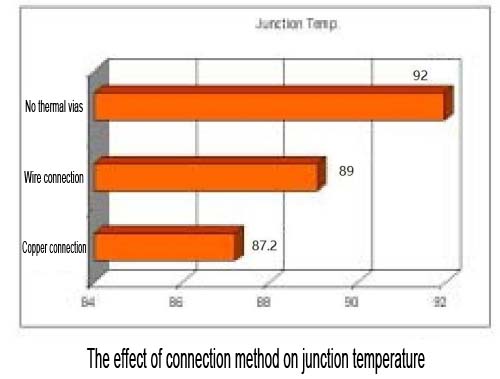
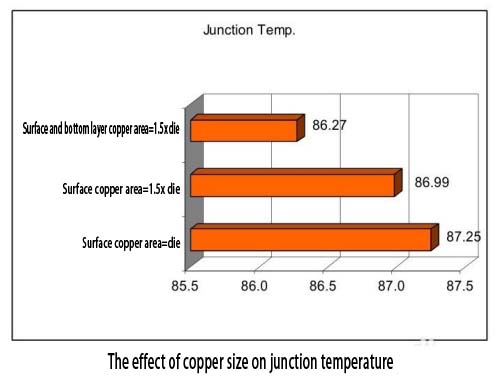
2. Thermal vias
Thermal vias can effectively reduce the junction temperature of the device, improve the uniformity of the temperature in the thickness direction of the board, and provide the possibility to adopt other heat dissipation methods on the back of the PCB. Through simulation, it is found that compared with non-thermal vias, thermal vias with a thermal power consumption of 2.5W, a pitch of 1mm and a center design of 6x6 can reduce the junction temperature by about 4.8°C, and the temperature difference between the top and bottom of the PCB Reduced from the original 21°C to 5°C. After the thermal via array is changed to 4x4, the junction temperature of the device has increased by 2.2°C compared with 6x6, which is worthy of attention.
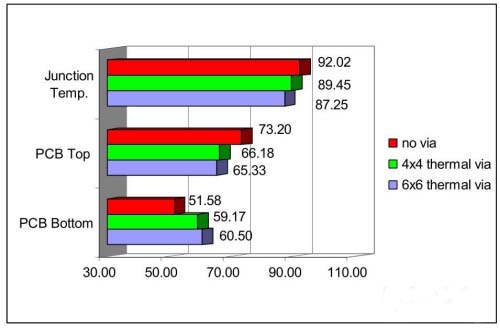
3. Exposure of copper on the back of the IC reduces the thermal resistance between the copper and air
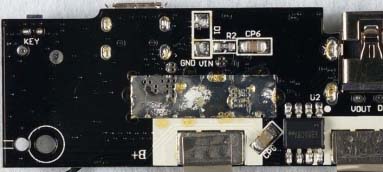
4. PCB layout
a. Place the heat sensitive device in the cold wind area.
b. Place the temperature detection device in the hottest position.
c. The devices on the same printed board should be arranged as far as possible according to their calorific value and degree of heat dissipation. Devices with small calorific value or poor heat resistance (such as small signal transistors, small-scale integrated circuits, electrolytic capacitors, etc.) should be placed The uppermost flow of the cooling airflow (at the entrance), and the devices with large heat generation or good heat resistance (such as power transistors, large-scale integrated circuits, etc.) are placed at the lowermost part of the cooling airflow.
d. In the horizontal direction, high-power devices are arranged as close to the edge of the printed board as possible to shorten the heat transfer path; in the vertical direction, high-power devices are arranged as close as possible to the top of the printed board to reduce the temperature of other devices when these devices are working Impact.
e. The heat dissipation of the printed board in the equipment mainly relies on air flow, so the air flow path should be studied during the design, and the device or printed circuit board should be reasonably configured. When air flows, it always tends to flow in places with low resistance, so when configuring devices on a printed circuit board, avoid leaving a large airspace in a certain area. The configuration of multiple printed circuit boards in the whole machine should also pay attention to the same problem.
f. The temperature-sensitive device is best placed in the lowest temperature area (such as the bottom of the device). Never place it directly above the heating device. It is best to stagger multiple devices on the horizontal plane.
g. Arrange the devices with the highest power consumption and the largest heat generation near the best position for heat dissipation. Do not place high-heating devices on the corners and peripheral edges of the printed board, unless a heat sink is arranged near it. When designing the power resistor, choose a larger device as much as possible, and make it have enough space for heat dissipation when adjusting the layout of the printed board.
h. Suggested component spacing:
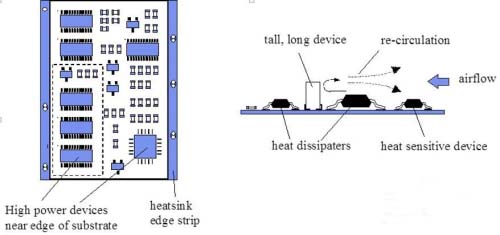
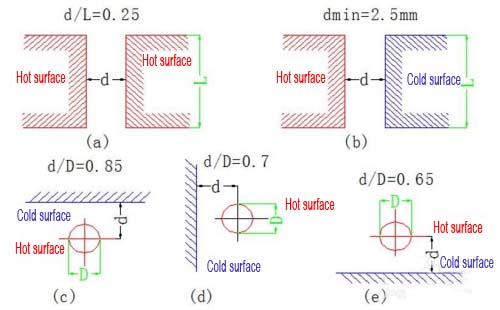
 Building 1, Senyang Electronic Technology Park, Guangming High-tech Park, Yutang Street, Guangming District, Shenzhen City.
Building 1, Senyang Electronic Technology Park, Guangming High-tech Park, Yutang Street, Guangming District, Shenzhen City.
 F:86-13418481618
F:86-13418481618
 pcba13@fastpcba.cn
pcba13@fastpcba.cn